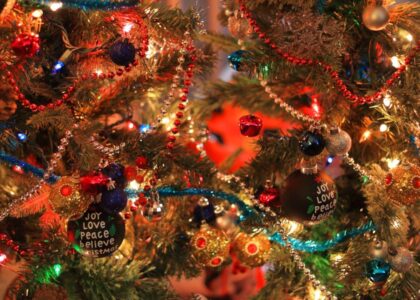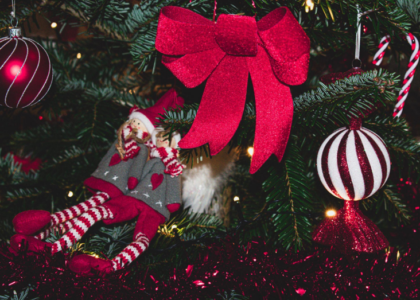Artificial Christmas trees are made primarily from plastic, a petroleum-based material, and so aren’t very good for the environment. Since PVC has a dirtier life cycle and requires more fossil fuels, it is particularly harmful to the environment, and it is a concern for many environmental groups.
Dioxins are released during the manufacturing of PVC. They’re also released during burning or landfilling at the end of its lifespan. Dioxins can cause reproductive problems, liver damage, and developmental disorders in children. Besides, artificial Christmas trees are mostly produced overseas, so there is also the impact of shipping and packaging.
But then, are artificial Christmas trees reusable?
As it turns out, most families use a tree for just a few years – usually about a decade (but sometimes less). The tree style may change over time (that happens too!) or they may become worn out and damaged. And then they’re thrown out (there really isn’t any way you can recycle artificial Christmas trees).
That’s quite a serious environmental problem over the long run.
But not to worry! If your artificial Christmas tree is made of PVC, you can beat down your family’s exposure to lead and phthalates.
Keep your artificial Christmas tree outside for a few hours before bringing it indoors. Plastic smell must dissipate (technically, these are VOCs that do not help the air quality inside).
Be sure to wear gloves when handling the tree and wash your hands before eating or snacking.
Also make sure your kids stay away from the tree (Decorative trees should remain merely decorations after they’ve been decorated). And ensure your children wash their hands before eating or snacking.
Utilize HEPA filters when vacuuming, and that on a regular basis. This would help to vacuum up chemicals without stress.






Recent Comments